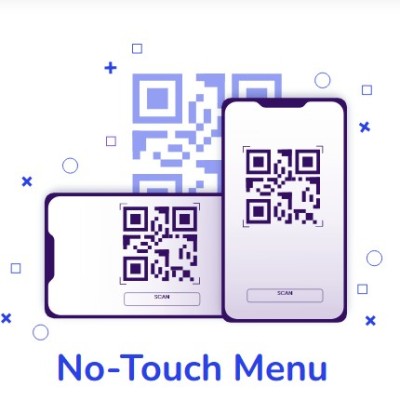Data is digital gold. Every bit of it is a treasure trove of insights necessary to remain agile, efficient, and competitive in dynamic markets. These insights lay the foundation for successful business decisions, strategies, and workflows. No wonder businesses, whether aggregator startups, small and mid-sized firms, or multinational corporates, make all possible efforts to collect every ounce of data. Nonetheless, managing such an overwhelming amount of data along with core business competencies is not a cakewalk.
In other words, almost every other thing in the digital world is a data-spewing machine, and organizations are flooded with data. Not to mention the ethical and legal responsibilities and compliances that come with data handling and management. Non-adherence to any of these leads to lawsuits, fines, and reputational damage. Balancing such ancillary tasks with core business competencies becomes challenging for many companies. And that’s what calls for data entry services!
The Imperative of Data Entry
Data entry involves collecting, organizing, and recording information into digital systems or databases. The process converts unstructured data into well-organized records that are easy to store and access. This seamless accessibility of information, in turn, facilitates informed decisions and enhances bottom-line efficiency. Moreover, data entry helps businesses ensure compliance with regulations like GDPR, CCPA, and other industry-specific regulations such as HIPAA—making them audit-ready at any time!
That said, almost every industry and vertical benefits from data entry services, including real estate, healthcare, banking and finance, retail, ecommerce, logistics, etc. Managing large volumes of data is critical for making informed decisions and streamlining operations in every industry. And data entry precisely serves that purpose, streamlining an organization’s workflow and making it easier to achieve business competencies.
While keying information is an important business function, every company must know which type of data entry they require. Thus, it is essential to understand the different types of data entry and how these benefit organizations across industries.
Types of Data Entry
Data entry is of several types, depending on the nature and format of the information being recorded. Take a look at some of the most common types of data entry:
Online Data Entry
Online data entry refers to inputting data directly into web-based systems or portals such as ERPs, CRMs, EHRs, etc. Examples include ecommerce catalog management, entering product details, updating online directories, and more.
Offline Data Entry
As the name suggests offline data entry, data is entered into offline systems without direct Internet access. Tasks such as transcribing handwritten notes or scanning documents into a local database fall under this category.
Image Data Entry
This involves extracting data from scanned images and documents using optical character recognition (OCR) software and manually entering this data into digital databases and spreadsheets. It is commonly used in industries like insurance and legal services.
Product/ Catalog Data Entry
Product and catalog data entry is usually the best fit for retail and ecommerce businesses. Information such as product names, descriptions, SKUs, attributes, product titles, prices, tax-related information, shipping details, etc., are maintained through catalog data entry.
PDF Data Entry
It involves extracting, inputting, and converting data from PDF documents into structured digital formats such as databases, spreadsheets, and content management systems. PDF data entry is essential in ecommerce, finance, healthcare, legal, and other industries.
Invoices and Forms Data Entry
Data from online and paper-based invoices and forms is extracted and entered into systems and databases. This is particularly beneficial for industries like logistics, transportation, manufacturing, and more.
Questionnaire/ Survey Data Entry
Survey data entry involves capturing responses from surveys/ questionnaires, whether paper-based or online. This data is further processed for analysis. Businesses generally use this type of data entry to gather customer feedback.
Medical Data Entry
Categorized particularly for the healthcare industry, medical data entry involves accurately recording and organizing information into digital systems and databases. The information includes medical records, test results, handwritten notes, prescriptions, and insurance claims.
Understanding these types helps businesses identify the specific type of data entry required. And while data entry may appear straightforward, the process demands precision, speed, and attention to detail. Errors or discrepancies while inputting information lead to misinformed business decisions, operational inefficiencies, and compliance violations.
When managing in-house data entry teams, organizations may end up cutting corners— compromising on the quality and accuracy of data being entered. Instead, the smarter way out is to outsource data entry tasks. It is the fail-proof way to achieve quality results without exhausting internal resources, enabling them to focus on core activities while professionals handle their data management needs.
Resolving the Outsourcing Versus In-House Data Entry Debate
The popular opinion is to manage data entry tasks in-house as it offers direct control over the process. However, managing such ancillary tasks in-house becomes challenging, especially for organizations with limited resources. Employees often have to balance data entry and their core competencies, leading to stretched bandwidth and hampered productivity. Instead, the smarter way out is to outsource data entry services and let professionals handle them. Organizations can reap a plethora of benefits by outsourcing data entry, some of which are listed below:
Metrics | In-House | Outsourcing |
Cost | High overhead costs | Transparent costing plans |
Scalability | Limited scalability | Flexible delivery models |
Data Quality and Accuracy | Might be compromised | Highest standards of data quality and accuracy |
Data Security | Direct control over the data | No direct control but comes with robust encryption and access controls |
Turnaround Times | Effective only for small, simple requirements | Quicker turnaround time for any data volume |
Technological Competence | Limited options | In-depth expertise in latest technology such as AI/ML tools and OCR software |
Legal and Ethical Compliance | Might be compromised | Strict adherence to compliance |










